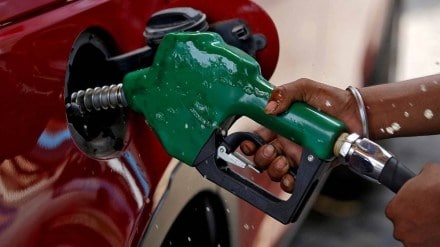– By Gautam Malhotra
The energy retail sector in India has undergone a significant transformation in recent years. With the advent of cutting-edge technologies such as artificial intelligence, user-friendly applications, IoT, and cloud-based services, as well as new business models, conventional energy distribution methods are being replaced by more advanced, innovative, and efficient systems. One such disruptive business model that is revolutionizing the energy retail industry is doorstep fuel delivery. With doorstep delivery businesses, consumers can now get fuel delivered to their doorstep. It has gained significant momentum due to its convenience, affordability, and efficiency. In a country like India, the world’s third-largest oil consumer, the demand for energy is increasing every day.
According to a report, the consumption of fuel has risen by 5 per cent in 2023 with 4.82 million barrels per-day (18.5 million tonnes). This is the 15th continuous year-on-year rise that the industry is witnessing, while being the highest recorded data compiled by the Indian Oil Ministry’s Petroleum Planning and Analysis Cell (PPAC) from 1998.
The traditional model of fuel distribution entails consumers traveling to the fuel stations in order to fulfil their fuel requirements for their gensets etc. This model has numerous limitations, such as the risk spillage, fuel theft, adulteration, congestion on roads, and long wait times. The capacity of fuel stations to serve the needs of customers is very limited due to the growing demand for energy. Doorstep fuel delivery successfully tackles these challenges by offering a more efficient and convenient mode of fuel delivery.
How easy is it now to purchase fuel?
As easy as a few taps on an application on your smartphone, and the fuel will be delivered to your doorstep. This model completely eliminates the need for consumers to travel to fuel delivery stations and it saves them valuable time, effort, and money. It is pilferage free, spillage free, and adulteration free. Doorstep fuel delivery also helps to reduce traffic congestion on roads leading to fuel stations, which can have a positive impact on the environment, especially in metropolitan areas.
What are some of the biggest advantages of doorstep fuel delivery?
The energy retail industry in India is undergoing a transformation with the emergence of new technologies and business models, one of which is doorstep fuel delivery. This model offers several advantages over traditional methods of fuel distribution, including convenience, affordability, and efficiency. Doorstep fuel delivery is 100 per cent safe, pilferage-free, spillage-free, and -adulteration-free. It also offers hassle-free single-vendor solutions with centralized billing and fully automated delivery. With doorstep fuel delivery, customers in remote areas can access fuel easily, and businesses can save on energy costs. By embracing this model, the energy retail industry in India can improve efficiency, reduce wastage, and provide a better customer experience.
One big use case of doorstep fuel delivery is that it can provide access to fuel in remote areas. In remote areas, more often than not, traditional fuel stations are not located centrally, making it difficult for people to access fuel. Doorstep fuel delivery can solve this problem by delivering fuel directly to the customers’ doorstep, regardless of their location, in the most time-efficient manner. This can be a game-changer for businesses in remote areas that rely on generators for their energy needs. Not only does doorstep fuel delivery make it easier for business owners in rural areas, but it also creates opportunities for newer jobs.
Doorstep fuel delivery can also offer cost savings to customers. By eliminating the need for physical fuel stations, doorstep fuel delivery companies can reduce their capex, and overhead costs, which can translate into cost savings for consumers by providing digital invoicing. This model can also offer significant advantages to fuel retailers. By eliminating the need for physical fuel stations, retailers can reduce their capital expenditure on infrastructure and equipment. Moreover, by using technology to track fuel deliveries and customer orders, retailers can optimise their supply chain and reduce wastage.
Technology is at the centre of this transformation
Technology is a key enabler of doorstep fuel delivery, and it is playing a crucial role in revolutionizing the energy retail industry in India. From online ordering systems to GPS-enabled delivery vehicles, technology is being used at every step of the delivery process to ensure efficiency, transparency, and accuracy. For example, fuel delivery companies use mobile apps to receive and process customer orders, which helps to reduce the time taken to process orders and deliver fuel. Moreover, the use of GPS tracking systems in delivery vehicles enables customers to track their orders in real-time, which provides greater transparency and accountability. The use of technology in doorstep fuel delivery is not only improving the customer experience but also helping to optimize the supply chain and reduce wastage, thereby improving the overall efficiency of the energy retail industry in India.
In conclusion, doorstep fuel delivery has the potential to revolutionize the energy retail industry in India. This model offers several advantages over traditional methods of fuel distribution, including convenience, efficiency, and cost savings. By embracing this model, both customers and fuel retailers can benefit from the numerous advantages it offers. It is time for the energy retail industry in India to adapt to this new model and embrace the future of fuel distribution.
(Gautam Malhotra is the managing director at FuelBuddy.)
Disclaimer: Views expressed are personal and do not reflect the official position or policy of Financial Express Online. Reproducing this content without permission is prohibited.
